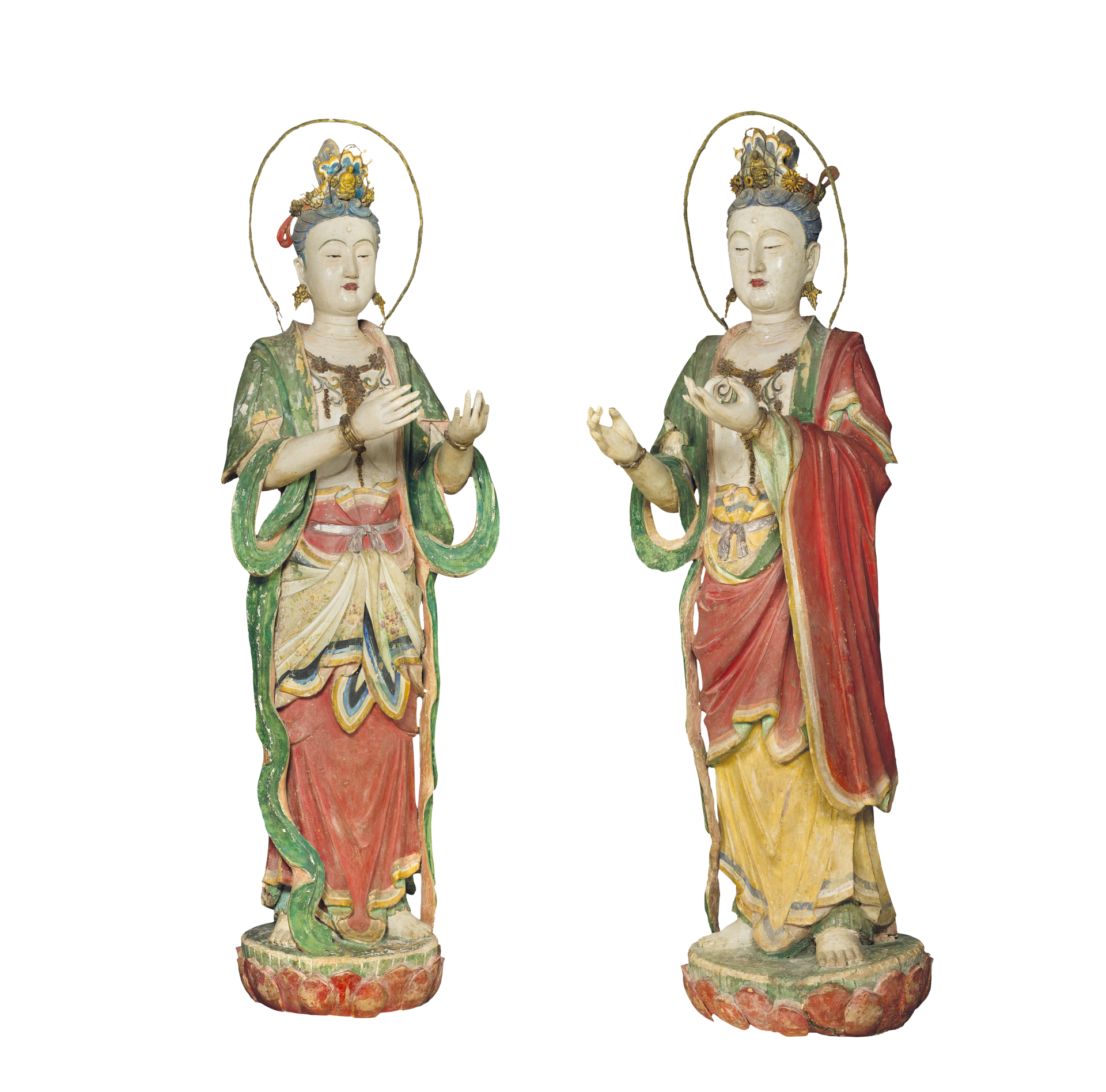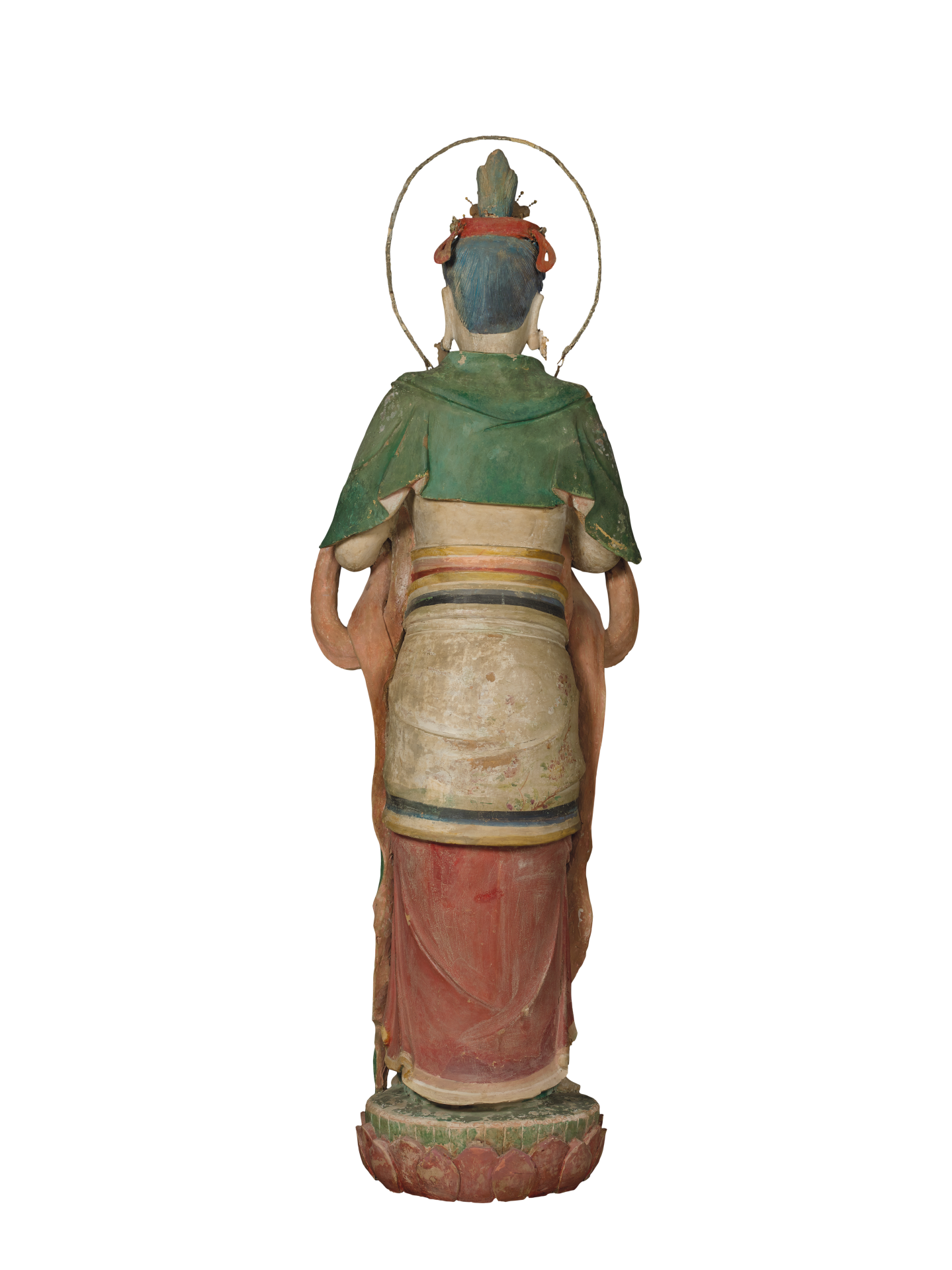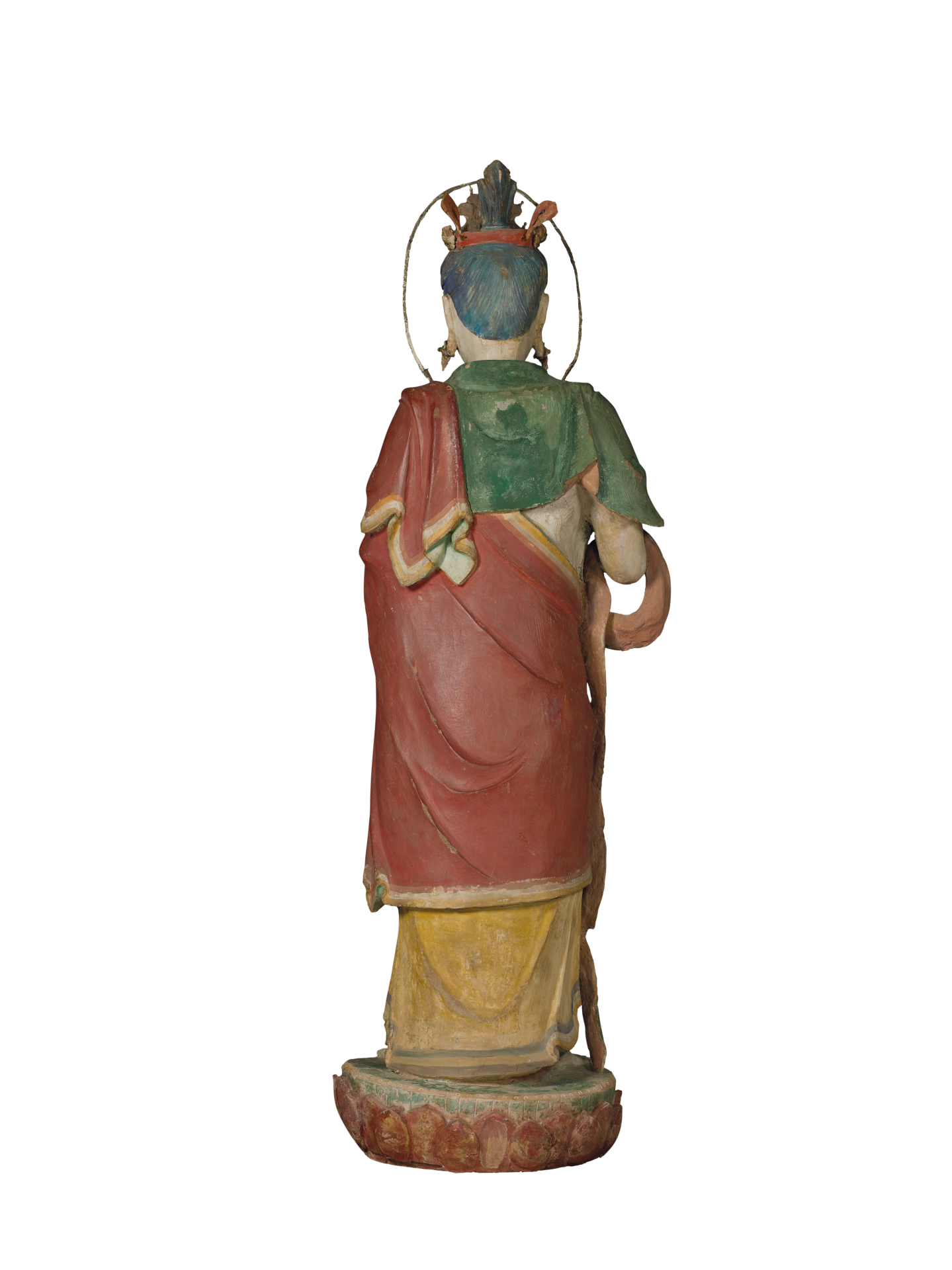Pair of Standing Guanyin Bodhisattva
Since the emperors, royal family and high officials of the Ming dynasty (1368-1644) were devout Buddhists, it was a trend of the time to build pagodas and monasteries, many of which still remain. Due to the ready availability of stucco, Buddhist statuary in Ming temples were largely produced using this material. Not only do they display a rich variety of subjects and lifelike images, some even appear as Suspended Sculptures occupying the entire wall surface in an extensive scale and presenting amazingly intricate details.
This pair of Guanyin statues standing over 200 cm tall are very similar in style and posture. They were probably acolyte Bodhisattvas among a large group of statuary originally enshrined in a monastery of considerable size. Each of the pair is portrayed as wearing ear ornaments and a diadem with floral design flanking a seated Amitābha Buddha image at the centre front. The spiral-like curls above the forehead are an iconographic characteristic of Ming statuary. Each statue has an oblong face, an ūrṇā in the middle of the forehead, narrowly opened eyes, a muscular pouch known as ‘recumbent silkworm’ beneath each eye socket, ruddy full lips, and a solemn and dignified countenance. Their hands are raised in front of the chest, but the objects formerly held in the hands are gone. Strings of jewellery adorn their chest; a shawl drapes from the shoulders and a long skirt wraps around the lower body. Each figure is standing barefooted on a lotus pedestal. The dressing style and dress colour of the pair differ slightly and thoughtfully from each other. Both statues are quite well preserved. The colour pigments remain vibrant and the decorative patterns distinct. Their close stylistic resemblance to the Ming polychrome stucco statuary at Shuanglin Monastery in Pingyao, Shanxi Province, suggests that they might have been sculpted by distinguished Shanxi artisans during the 15th century.


